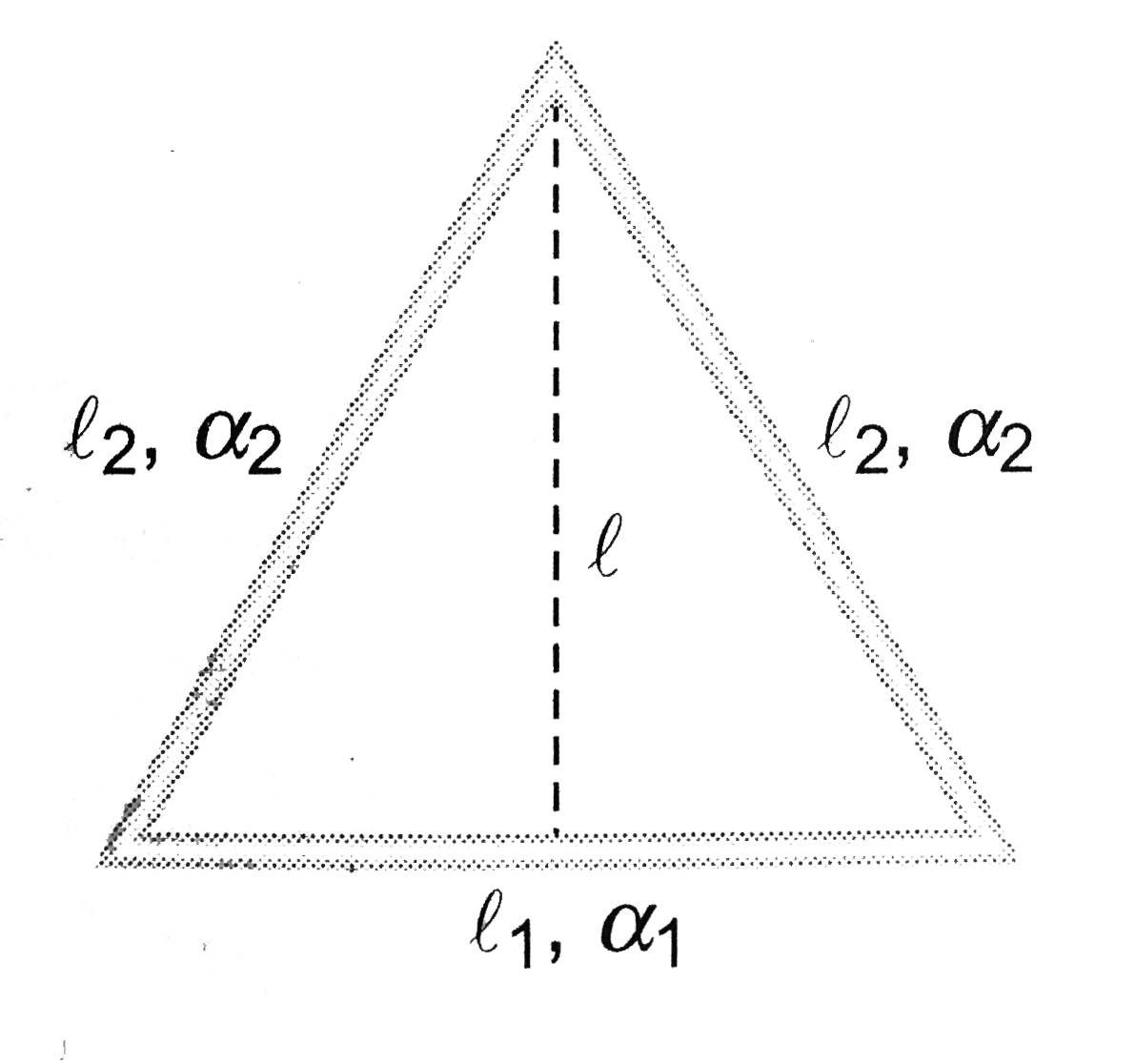A rod of length l and coefficient of linear expansion α. Find increase in length when temperature changes from T to T+ ΔT
lαΔT
l(1+αΔT)
l(1+2αΔT)
none of these
The correct Answer is:A
Step by step video, text & image solution for A rod of length l and coefficient of linear expansion alpha. Find increase in length when temperature changes from T to T+ DeltaT by Physics experts to help you in doubts & scoring excellent marks in Class 12 exams.
Updated on:21/07/2023Similar Questions
find out the increase in moment of inertia I of a uniform rod (coefficient of linear expansion α) about its perpendiuclar bisector when itsw temperature is slightly increased by ΔT.
View SolutionTwo rods each of length L2 and coefficient of linear expansion α2 each are connected freely to a third rod of length L1 and coefficient of expansion α1 to form an isoscles triangle. The arrangement is supported on a knife-edge at the midpoint of L1 which is horizontal. what relation must exist between L1 and L2 so that the apex of the isoscles triangle is to remain at a constant height from the knife edge as the temperature changes ?
View Solution
Knowledge Check
The temperature of an isotropic cubical solid of length l0, density ρ0 and coefficient of linear expansion α is increased by 20∘C. Then at higher temperature , to a good approximation:-
ALength is l0(1+20α)BTotal surface area is l20(1+40α)CTotal volume is l30(1+60α)DDensity is ρ01+60αA thin rod, length L0 at 0∘C and coefficient of linear expansion α has its two ends mintained at temperatures θ1 and θ2 respectively Find its new length .
AL0[1+α(θ1+θ2)]BL0(1+α(θ1+θ22))CL0(1+αθ1)DL0(1+α(θ1+θ22))If two rods of length L and 2L having coefficients of linear expansion α and 2α respectively are connected so that total length becomes 3L, the average coefficient of linear expansion of the composite rod equals
A32αB52αC53αDNone of these
Two metallic rods of length l and 3l have coefficient of linear expansion α and 3α respectively. The coefficient of linear expansion ofr their series combinations, is
View SolutionAn isosceles triangle is formed with a thin rod of length l1 and coefficient of linear expansion α1, as the base and two thin rods each of length l2 and coefficient of linear expansion α2 as the two sides. The distance between the apex and the midpoint of the base remain unchanged as the temperature is varied. the ratio of lengths l1l2 is

View SolutionTwo metal rods of lengths L1 and L2 and coefficients of linear expansion α1 and α2 respectively are welded together to make a composite rod of length (L1+L2) at 0∘C. Find the effective coefficient of linear expansion of the composite rod.
View SolutionA metal rod of length L cross sectional area A young modulus Y and coefficient of linear expansion α is heated to t∘C The work that can be performed by the rod when heated is
View SolutionThere are two rods of length l1 l2 and coefficient of linear expansions are α1 and α2 respectively.
Find equivalent coefficient of thermal expansion for their combination in series.
View Solution
